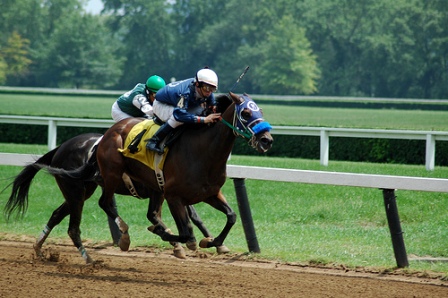North America: Home to World’s Deadliest Racetracks
In the latest installment of “Yeah, What PETA Said,” the Jockey Club has released the findings of a study that concluded that horses used for racing are dying on U.S. and Canadian tracks at twice the rate—at least—of any other country, probably for the very reasons that PETA has stated (over and over again): drugs and dirt tracks.
Horses forced to race in the U.S. and Canada, where they commonly race on dirt tracks and where the use of many drugs that mask the pain of injuries is still legal, die at the rate of 2.04 per 1,000 starts (or races). By contrast, in England—where horses are raced less frequently and mainly on turf and where the use of performance-enhancing drugs is much more strictly regulated—horses die at a rate of 0.8 to 0.9 per 1,000 starts. In Victoria, Australia, the risk of fatality drops even further to 0.44 per 1,000 starts.
Running on dirt tracks is rough on every joint in a horse’s body. It causes their leg bones, knees, and ankles to sustain significant trauma, but regardless of their injuries, these animals are often still forced to race when they should be recovering. They are pumped full of drugs that are used to mask the pain, which can lead to tragic, and oftentimes deadly, breakdowns on race tracks.
In California, where dirt tracks have been replaced by synthetic surfaces, the number of horses suffering catastrophic injuries during races has plummeted 40 percent.
So our question to the Jockey Club and the National Thoroughbred Racing Association is: What are you waiting for? Let’s get busy adopting PETA’s recommendations to make tracks safer already, shall we?
Written by Alisa Mullins


